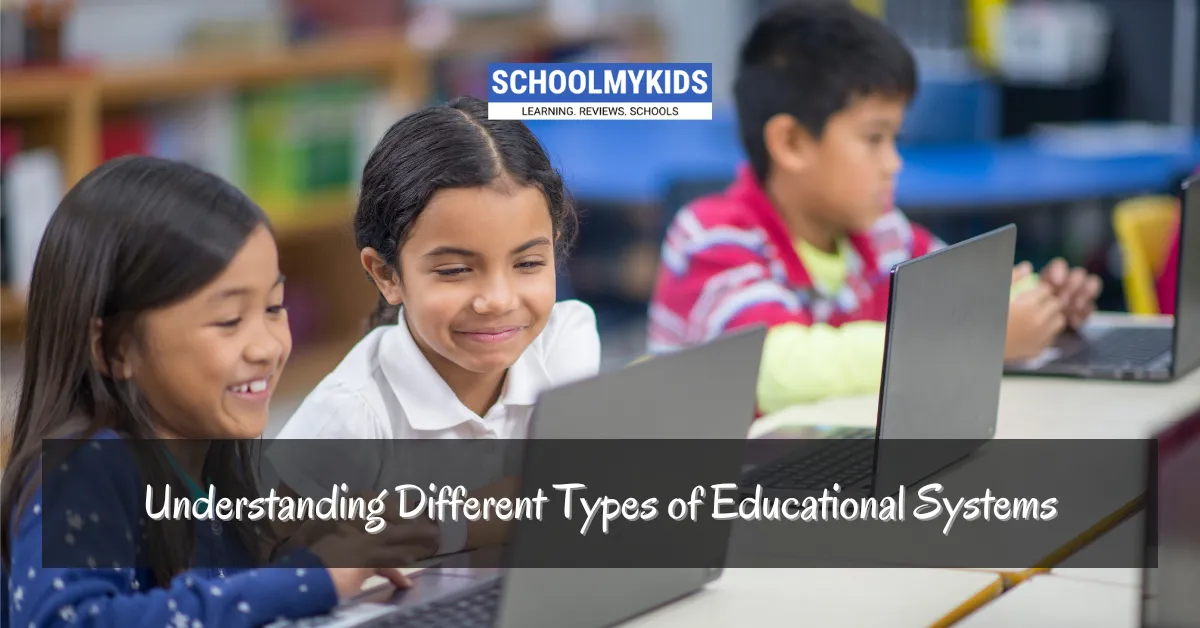Education is a fundamental pillar of society, shaping our children and communities alike. As parents navigate the landscape of education systems, understanding the various school types available is crucial for making informed decisions about their children's future. This blog will explore different education systems, their characteristics, advantages, and disadvantages, and guide parents in choosing the right fit for their child.
Overview of Educational Systems
Educational systems can be broadly categorized into several types, each with its unique approach to teaching and learning. The most common systems include:
- Traditional Education: This system is characterized by a teacher-centered approach, where instruction is primarily lecture-based and students are expected to absorb information passively. It often emphasizes rote memorization and standardized testing.
- Modern Education: In contrast to traditional methods, modern education focuses on student engagement, critical thinking, and practical skills. It incorporates technology and innovative teaching methods to foster a more interactive learning environment.
- Montessori Education: Developed by Dr. Maria Montessori, this system emphasizes self-directed learning and hands-on activities. Children learn at their own pace in a prepared environment that encourages exploration and independence.
- International Education: This approach often follows globally recognized curricula, like the International Baccalaureate (IB) or Cambridge International Examinations. It aims to provide students with a broad perspective on global issues and cultures.
- Homeschooling: Parents take on the role of educators in this system, tailoring the curriculum to fit their child's needs and interests. Homeschooling allows for flexibility but requires a significant commitment from parents.
Characteristics of Each System
Traditional Education
- Characteristics: Teacher-led instruction, focus on academic subjects, standardized testing.
- Pros: Familiar structure for many families; strong emphasis on foundational knowledge.
- Cons: Limited engagement; may not cater to diverse learning styles.
Modern Education
- Characteristics: Student-centered learning, integration of technology, emphasis on life skills.
- Pros: Encourages critical thinking; prepares students for real-world challenges.
- Cons: May require more resources; implementation can vary significantly between institutions.
Montessori Education
- Characteristics: Child-led exploration, mixed-age classrooms, hands-on learning materials.
- Pros: Fosters independence; promotes a love for learning.
- Cons: Less structure may not suit all children; limited availability of schools.
International Education
- Characteristics: Global curricula, emphasis on cultural awareness and languages.
- Pros: Prepares students for a globalized world; diverse student body.
- Cons: Can be expensive; may not align with local educational standards.
Homeschooling
- Characteristics: Customized curriculum, flexible schedule, parental involvement.
- Pros: Tailored education; strong family bonds.
- Cons: Requires significant time and effort from parents; potential gaps in socialization.
Making the Right Choice for Your Child
When evaluating different school types and education systems, consider these factors:
Your Child's Learning Style
- Consider how your child learns best
- Evaluate their interests and strengths
- Assess their social needs
Family Values and Goals
- Long-term educational objectives
- Cultural and linguistic priorities
- Financial considerations
Practical Considerations
- Location and transportation
- Financial commitment
- Time investment
- Family logistics
School Environment
- Class sizes
- Teaching Philosophy
- Available resources
- Community involvement
How Parents Can Make Decisions
Choosing the right educational system for your child involves careful consideration of several factors:
- Child's Learning Style: Understand how your child learns best. Some children thrive in structured environments, while others excel in more flexible settings.
- Family Values and Goals: Reflect on what you value most in education. Is it academic excellence, creativity, or social skills? Your priorities will guide your choice.
- Local Options Available: Research the schools in your area. Visit potential schools to get a feel for their environment and teaching methods.
- Future Aspirations: Consider your child's future goals. If they aspire to attend an international university, an international education might be beneficial.
- Community Support: Engage with other parents and educators to gather insights about different systems. Their experiences can provide valuable context.
Conclusion
In conclusion, understanding different types of educational systems is essential for parents making decisions about their child's education. Each system has its unique characteristics that come with distinct pros and cons. By considering their child's learning style, family values, local options available, future aspirations, and community support, parents can make better choices that align with their child's needs. Ultimately, the goal is to build an environment where children can thrive academically and personally within the chosen education system.









Be the first one to comment on this story.